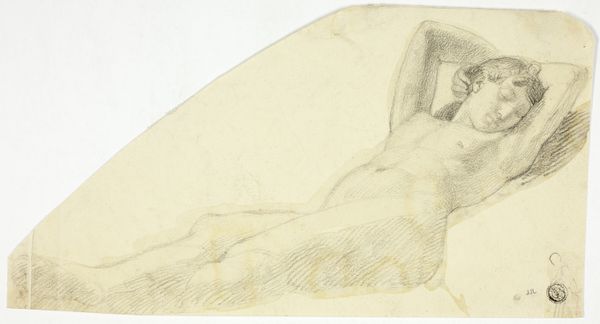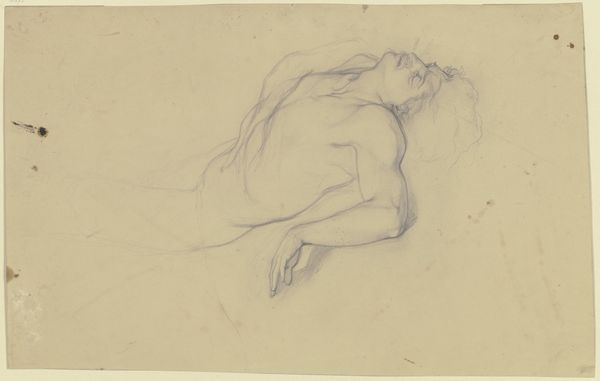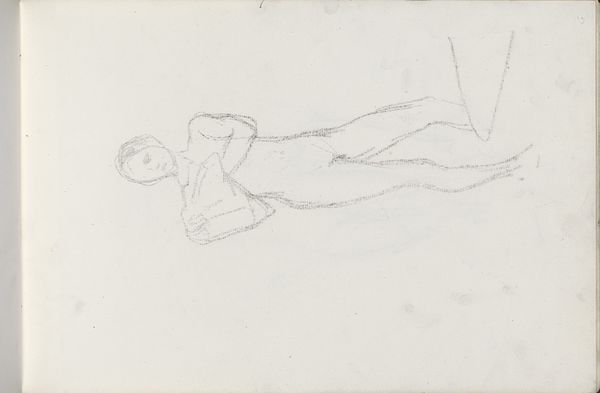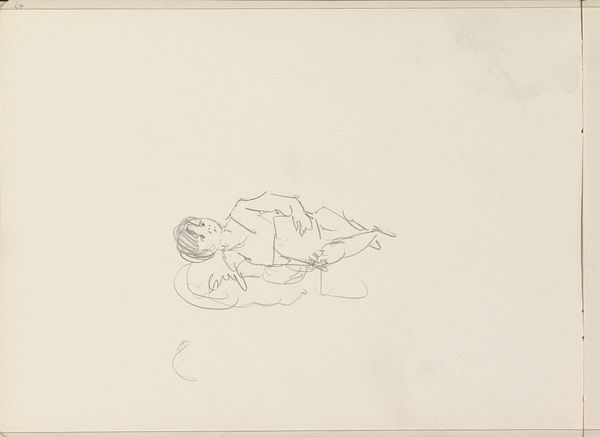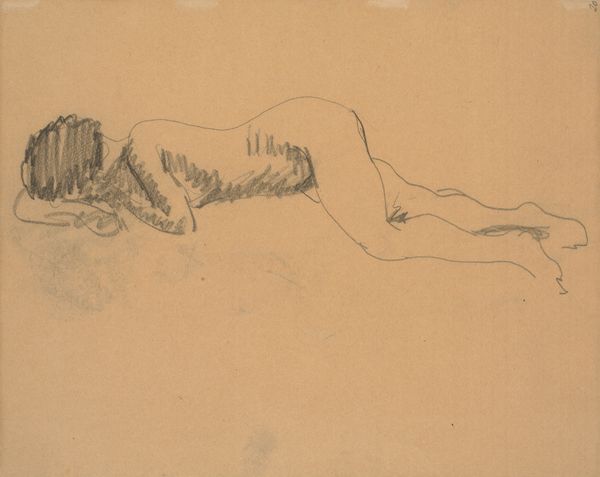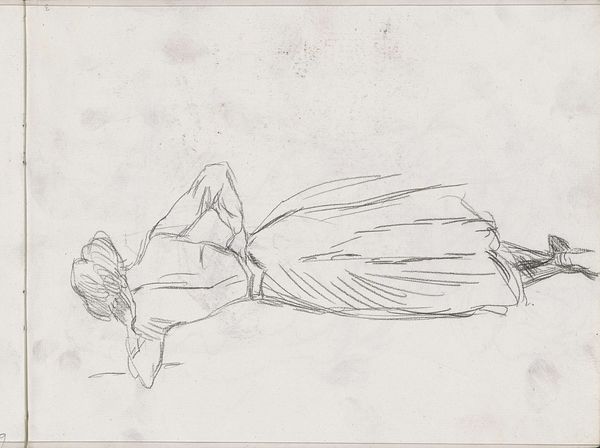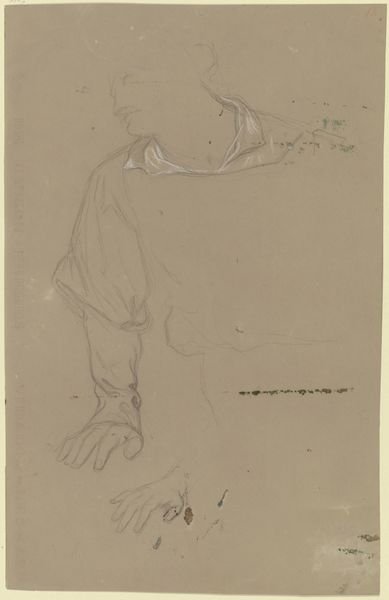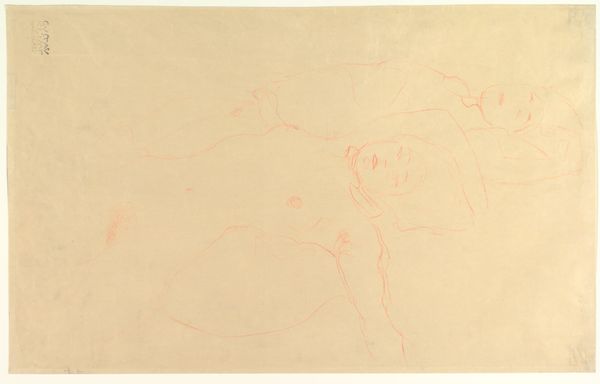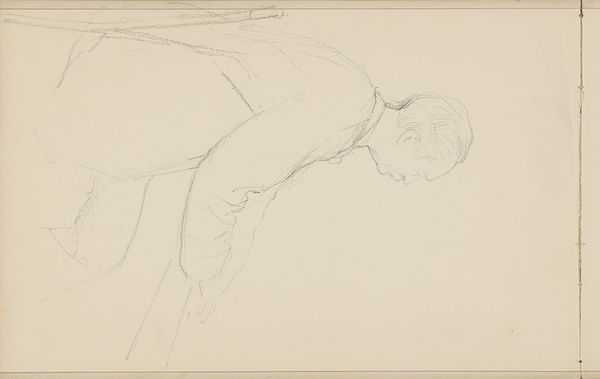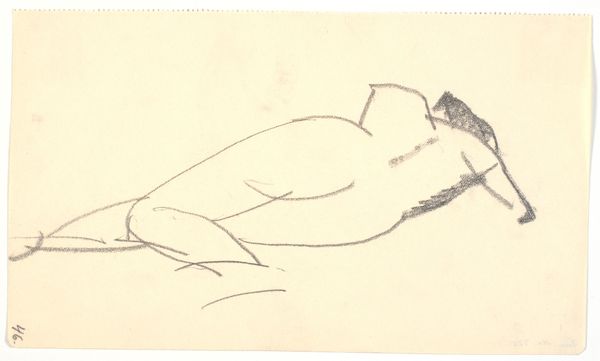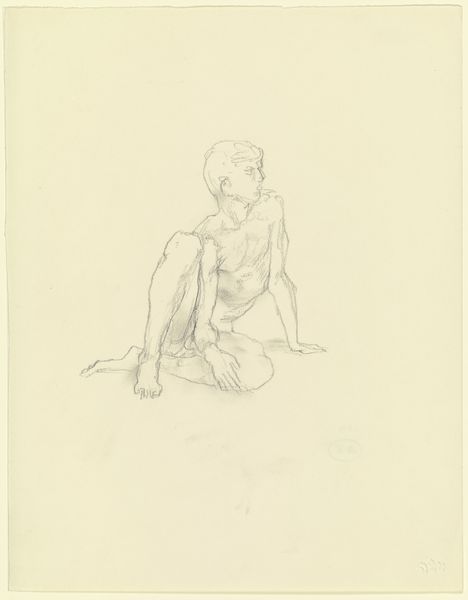
Die Richard III. heimsuchende Prinzessin Anne, als männlicher (_) Akt
0:00
0:00
drawing, paper, pencil
#
drawing
#
figuration
#
paper
#
pencil drawing
#
pencil
#
portrait drawing
#
nude
Copyright: Public Domain
Curator: Before us, we have a pencil drawing by Victor Müller entitled "Die Richard III. heimsuchende Prinzessin Anne, als männlicher (_) Akt," currently held at the Städel Museum. Editor: It’s striking. Stark, even. The pose seems vulnerable, and yet the androgynous, almost careless rendering exudes a subdued power. Curator: Exactly. Focusing on the material, it’s evident that Müller utilizes the pencil with deliberate simplicity. Look at the economy of line, how he captures form and gesture with such minimal effort. The laid paper adds to this feeling. We see no furious artistry at work here, nothing precious. This suggests a process more about working through form and anatomy and less about finished presentation. Editor: But this apparent simplicity belies its complexity. To cast Anne, the grieving widow of Richard's victim, as a nude male figure is to destabilize traditional representations of power and mourning. It begs the question of masculine authority over historical narrative. Think about the male gaze often applied to portrayals of women and how that’s complicated here. Curator: And consider the paper itself – its ready availability signifies art for exploration and instruction rather than something monumental. Perhaps a study done to develop another idea. Was there an ease of material and its implications? Its accessibility might denote something about artistic communities and instruction that other forms of media and support wouldn't reveal? Editor: Precisely. This speaks volumes about how identity and historical trauma were being re-evaluated. And isn’t it a challenge to those historical and literary interpretations that frame women solely through their relationship to male power? It provokes discussion around the constructed nature of gender itself. Curator: Agreed. This drawing compels us to consider how something as seemingly simple as pencil on paper can be charged with artistic, material, and sociopolitical questions. It prompts inquiry into artistic development within shifting production contexts and how artworks and sketches are used, exchanged, valued. Editor: Ultimately, this artwork becomes a powerful statement about the complexities of gender, power, and the way historical narratives can be manipulated and reclaimed.
Comments
No comments
Be the first to comment and join the conversation on the ultimate creative platform.
